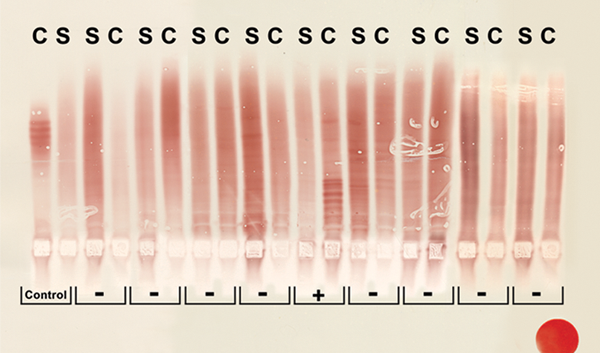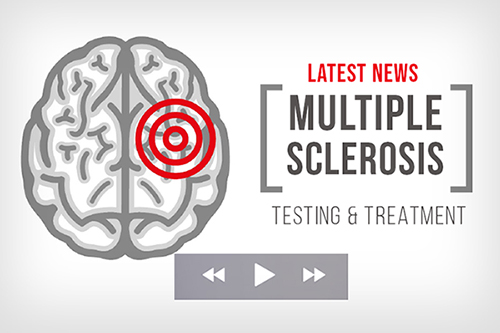IgG Isoelectric Focusing

The SPIFE IgG IEF kit is intended for the identification of IgG-specific oligoclonal banding in serum and CSF using isoelectric focusing and immunoblotting. This technique is considered the “Gold Standard” method for the determination of intrathecal IgG synthesis in the clinical diagnosis of multiple sclerosis.
When there is a restricted humoral immune response, oligoclonal bands can be detected in the CSF. The concentration of individual bands may be as low as 2% of the total CSF IgG but can be seen against the background of polyclonal IgG present through filtration from the blood. Due to this filtration, it is important to rule out oligoclonal IgG from the blood by running parallel serum samples against CSF samples. The presence of oligoclonal banding in CSF but not in serum is considered indicative of MS. With IEF, oligoclonal banding may be detected while the total CSF IgG concentration is still within the reference range. Isoelectric focusing is considered twice as sensitive as the IgG index and gives superior resolution over standard electrophoresis.
Immunoblot vs Immunofixation
A message from Tipton Golias on the Oligoclonal Banding Assay. An update to the McDonald Criteria used for diagnosing multiple sclerosis will place an increased emphasis on the importance of CSF testing for oligoclonal bands in the presence of equivocal MRI results. The SPIFE IgG IEF method of nitrocellulose immunoblotting, “remains the ‘gold standard’ method recommended by the International Consensus publication and is preferred over IEF followed by immunofixation. The onus is on the protagonists of in-gel immunofixation to show that it performs to the same level as the de-facto standard in both sensitivity as well as the very wide range of IgG concentrations.” Professor EJ Thompson,November 2017
Emeritus Prof E J Thompson PhD MD DSc FRCPath FRCP is a noted pathologist, researcher, physician and professor emeritus in the Department of Neuroimmunology at the Institute of Neurology, University College London and a clinician at The National Hospital for Neurology & Neurosurgery in England. Dr. Thompson and his associates pioneered the work to develop the “gold standard” method for detecting oligoclonal banding in cerebral spinal fluid using IEF and immunoblot. This technique, along with other clinical data, has enabled confirmation of the diagnosis of multiple sclerosis on a wide International scale.
SPIFE IgG Isoelectric Focusing for CSF and Serum
Cat. No. / Item / Description
3389 – SPIFE IgG IEF Kit – 10 x 5 profiles per gel*
3385 – SPIFE IgG IEF 20 Kit – 10 x 10 profiles per gel*
Kits include: Anode Solution, Cathode Solution, Blocking Agent, Acetate Buffer Concentrate, Chromogen, IgG IEF Antibody, Transfer Membranes, Blotters, Wicks, Sample Templates.
3384 – SPIFE IgG IEF Chromogen (5 vials)
High Resolution Protein Marker
Cat. No. / Item / Description
5141 – High Resolution Protein Marker – 1 x 0.2 mL
For use as a qualitative marker with the SPIFE and TITAN GEL systems, the marker simulates oligoclonal banding in CSF and serum. This provides assurance that the necessary degree of resolution has been achieved, and offers a visual reference for differentiating oligoclonal bands. The marker is a stabilized liquid prepared from human serum.
Additional Supplies and Equipment for SPIFE IgG IEF:
REP Prep (Cat. No. 3100), SPIFE IgG IEF Electrodes (Cat. No. 3383), SPIFE IgG IEF Square Electrodes (Cat. No. 3703), SPIFE IEF Adapter and Electrodes (Cat. No. 3704), Development Weight (Cat. No. 5014), Staining Dish (Cat. No. 4061)

